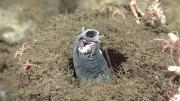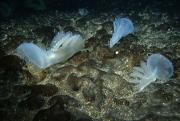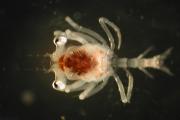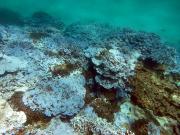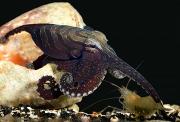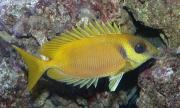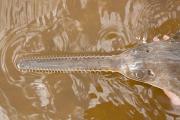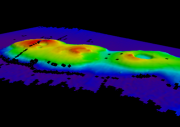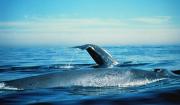The hagfish is one of those animals that scientists aren’t quite sure how to classify. These bottom-feeders have a skull but no backbone. Like lampreys, they have no jaw, but then lampreys do have vertebrae. Hagfish look like eels, but with naked skin instead of scales. They can survive up to 36 hours without oxygen — while their hearts keep beating — and they’ve been around for more than 350 million years, long, long before the first dinosaurs ever walked the Earth.
Articles
The Marine Science Institute's monthly column, Science and the SeaTM, is an informative and entertaining article that explains many interesting features of the marine environment and the creatures that live there. Science and the SeaTM articles appear monthly in one of Texas' most widely read fishing magazines, Texas Saltwater Fishing, the Port Aransas South Jetty newspaper, the Flour Bluff News, and the Island Moon newspaper. Our article archive is available also on our website.
Tiny marine creatures known as zooplankton feed on phytoplankton, which use photosynthesis to create their food. Since phytoplankton tend to hang out at the ocean’s surface to absorb the sun’s energy, zooplankton head there for their meals each night. But when morning arrives, zooplankton become targets for predators, so they move to deeper waters during the day.
Of more than 300 species of octopuses, a few outliers are bound to do things a little differently. Meet the sneaky — but surprisingly social — larger Pacific striped octopus, who has some unconventional ways of taking both his meals and his mates. While most octopus species seize their prey with all eight arms before the critter can escape, the Pacific striped octopus scrunches itself together and stealthily approaches its prey from behind. It then extends just one tentacle to tap the prey, such as a shrimp, on its far side.
Breeding season can be brutal — even bloody — for male elephant seals. These heavyweights take the competition for mates very seriously, with both vocal and physical threats to other males. Sometimes they rear up to show their height, and sometimes they slam their chests onto the sand to send intimidating vibrations into the ground. But despite all this posturing, actual physical fights occur less than five percent of the time in elephant seal colonies.
If a species on the brink of extinction could learn to clone itself, that nifty trick could improve its chances for survival. And that’s exactly what scientists have discovered some smalltooth sawfish are doing in Florida — reproducing without mating. This critically endangered species is one of five species of sawfish, creatures that look like a cross between a shark, a ray and a chainsaw blade. Sawfish have a long, flat snout with widely spaced teeth that protrude in a line on either side, an arrangement that is reminiscent of a saw.
You might think the largest – and perhaps loudest – animal ever to roam the planet would not be hard to track. After all, blue whales can grow up to 100 feet long, weigh up to 200 tons and produce sounds that travel 1,000 miles. And yet, until recently, scientists had difficulty figuring out where these massive krill-eating creatures traveled. Now, a single female named Isabela has offered some clues.

